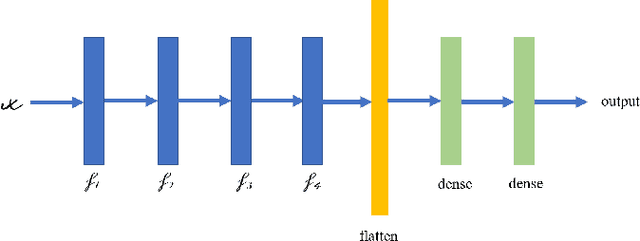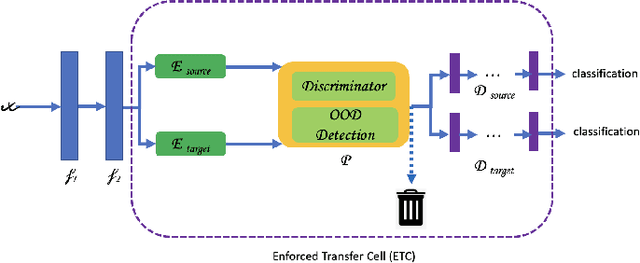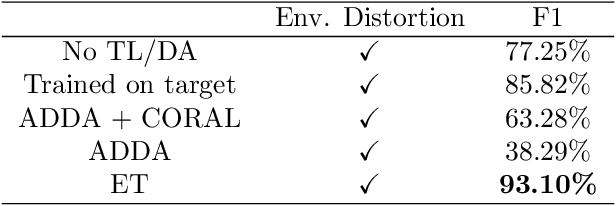The Enforced Transfer: A Novel Domain Adaptation Algorithm
Paper and Code
Jan 24, 2022



Existing Domain Adaptation (DA) algorithms train target models and then use the target models to classify all samples in the target dataset. While this approach attempts to address the problem that the source and the target data are from different distributions, it fails to recognize the possibility that, within the target domain, some samples are closer to the distribution of the source domain than the distribution of the target domain. In this paper, we develop a novel DA algorithm, the Enforced Transfer, that deals with this situation. A straightforward but effective idea to deal with this dilemma is to use an out-of-distribution detection algorithm to decide if, during the testing phase, a given sample is closer to the distribution of the source domain, the target domain, or neither. In the first case, this sample is given to a machine learning classifier trained on source samples. In the second case, this sample is given to a machine learning classifier trained on target samples. In the third case, this sample is discarded as neither an ML model trained on source nor an ML model trained on target is suitable to classify it. It is widely known that the first few layers in a neural network extract low-level features, so the aforementioned approach can be extended from classifying samples in three different scenarios to classifying the samples' activations after an empirically determined layer in three different scenarios. The Enforced Transfer implements the idea. On three types of DA tasks, we outperform the state-of-the-art algorithms that we compare against.
 Add to Chrome
Add to Chrome Add to Firefox
Add to Firefox Add to Edge
Add to Edge